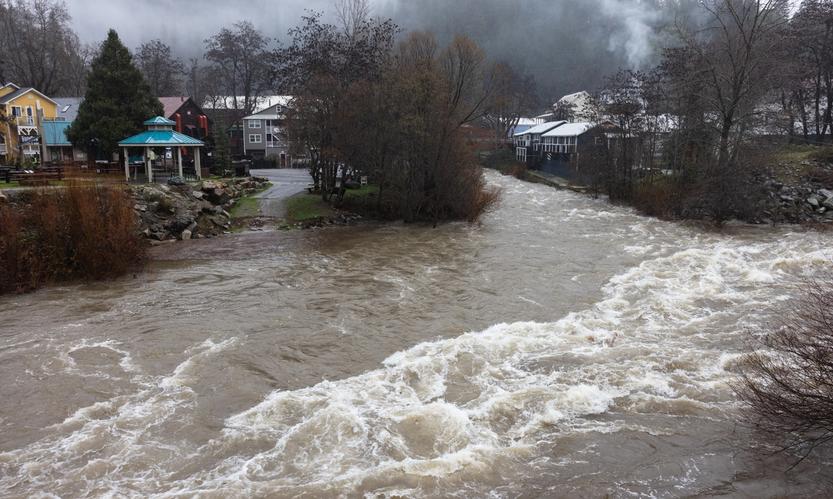Cory's Historical Corner
November 22, 2023
Therefore, it is my opinion that Michele Lavezzola actually first came to Sierra County in the late 1850s (as opposed to 1867), appearing in the 1860 census of Downieville, then later returned to Italy for his wife and married her in San Colombano Certenoli in 1869. The two then returned to Sierra County, reporting their home at Charcoal Flat in both the 1870 and 1880 censuses and purchasing the ranch that now bears the Lavezzola name sometime after their arrival back to California, eventually moving there full-time. The ranch on the south side of the North Yuba River at Charcoal Flat, at which the Lavezzola family first resided, was for many years known as the “Italian Ranch” and was later inhabited by the Sorracco, Quirolo, and Romano families (all from Liguria) and is still to this day known as the Romano Ranch. Charcoal Flat received its name by being an early location where charcoal manufacturing occurred. As written by fellow historian Hank Meals: “Until the early 1870s charcoal manufacturing was pursued solely by the Chinese… As intolerance and persecution against them reached a feverish pitch the Chinese were forced to yield the trade to the Italians. The charcoal making trade was ancient in Europe but in the American West it was a multifaceted industry requiring a labor force that included: wood cutters, muleteers to transport the timber, kiln or pit builders and charcoal providers (retail or shipped). The kiln or pit controllers were responsible for monitoring the varying temperatures inside. Once the charcoal was produced it was bagged and loaded onto freight wagons and then transported to smelting furnaces. That kind of solvency applies only if you’re working for a big company. Life for most Italian charcoal burners was extremely harsh; they were required to live outdoors most of the year in makeshift camps near their wood sources.” Meals further describes the charcoal-making process as follows: “Charcoal requires slowly heating wood in the absence of air (pyrolysis). Slow charring removes moisture and volatile gasses producing a light, black form of carbon resembling coal. Charcoal burns much hotter than wood (twice the heat of seasoned wood) and more evenly and consistently. Carbonization leaves a low ash content and low amounts of trace elements like sulfur and phosphorous, meaning it produces ‘clean’ heat that is intense enough to reduce iron oxide into pig iron (2,600 ̊F to 3,000 ̊F). Charcoal is also much easier than wood to transport and store with one-third its weight and one-half its volume. California charcoal producers typically used an open pile, or ‘meiler’, or temporary surface ovens. They were shallow fire pits with tightly packed wood billets stacked on their ends to form a conical pile with openings at the bottom to admit air and a central shaft to serve as a flue. The whole pile is then covered with soil, turf or moistened clay. The firing begins at the bottom of the flue, and gradually spreads outwards and upwards. It took constant surveillance and considerable skill to keep the smoldering wood from bursting into flame and losing the charcoal.” Charcoal Flat also has a special importance to me, as I grew up at Romano Ranch — my parents purchased the property in 2002 when I was six years old. Today, Johnny Romano’s old cabin is the only historic building that remains on the property, and I have yet to discover any remnants of the charcoal manufacturing that occurred in the vicinity. However, Hank Meals states he discovered the remains of charcoal surface ovens at Wild Plum near Sierra City during an archeological survey in the 1980s. I will continue the history of the Lavezzola family and their later ranch in Part 6, coming next week! An old photo of the Romano Ranch (earlier Italian Ranch)Several records indicate that Michele Lavezzola was in Sierra County well before 1867, his supposed arrival date that is stated in many sources. In the 1860 census of Downieville, Michele Lavezzola is listed along with several other Italian miners. In researching the history of Charcoal Flat long ago, I found records that Michele joined John Lavezzola at the latter’s ranch there by 1864. As stated in my last article, John and Michele were likely either brothers or in-laws. The 1870 and 1880 censuses of Butte Township (which included Sierra City, Loganville, and Charcoal Flat) lists John Lavezzola and his family; next on the list is Michele Lavezzola and his wife (with their respective birth years listed as 1835 and 1848, which matches with other records on the couple).
An old photo of the Romano Ranch (earlier Italian Ranch)Several records indicate that Michele Lavezzola was in Sierra County well before 1867, his supposed arrival date that is stated in many sources. In the 1860 census of Downieville, Michele Lavezzola is listed along with several other Italian miners. In researching the history of Charcoal Flat long ago, I found records that Michele joined John Lavezzola at the latter’s ranch there by 1864. As stated in my last article, John and Michele were likely either brothers or in-laws. The 1870 and 1880 censuses of Butte Township (which included Sierra City, Loganville, and Charcoal Flat) lists John Lavezzola and his family; next on the list is Michele Lavezzola and his wife (with their respective birth years listed as 1835 and 1848, which matches with other records on the couple).
Featured Articles

Storms Bring Heavy Rainfall and Local Disruptions →
December 22, 2025
Sierra County faces power outages and water issues amid heavy rainfall and storm warnings.
215 Animals Seized for Cruelty from Grass Valley Property →
December 22, 2025
Human Remains Found Near South Yuba Bridge in March Identified →
December 17, 2025
Transfer Station Burn Suspended After Community Concerns →
December 16, 2025
Sierra Hardware Plans Extensive Repairs After Flood Damage →
December 8, 2025